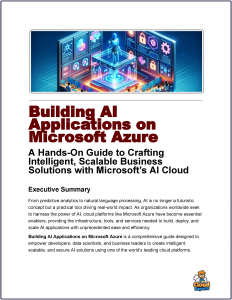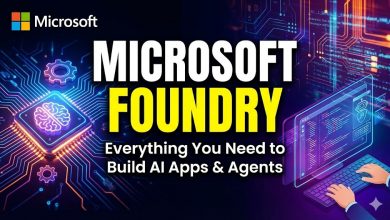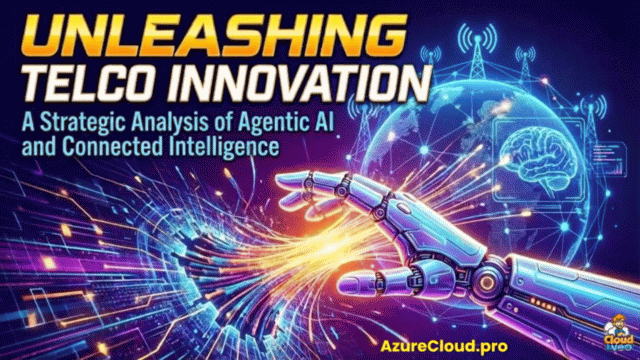Building a Digital Workforce with Multi-Agents in Azure AI Foundry Agent Service
Empowering multi-agent apps with the open Agent2Agent (A2A) protocol.
 As Microsoft writes here the multi-agent orchestration capabilities of Azure AI Foundry Agent Service enable developers to build scalable, modular, and intelligent AI systems.
As Microsoft writes here the multi-agent orchestration capabilities of Azure AI Foundry Agent Service enable developers to build scalable, modular, and intelligent AI systems.
It highlights the shift from single-agent to multi-agent architectures, which are better suited for complex, multi-step business processes like customer support, market research, and financial analysis.
Key features include:
- Connected Agents: These allow developers to break down tasks into specialized roles, enabling seamless collaboration without custom orchestrators. For example, a customer authentication agent verifies identities, while a billing agent retrieves account data, ensuring modularity and extensibility.
- Interoperability: Support for open protocols like Model Context Protocol (MCP) and Agent2Agent (A2A) enables agents to communicate across platforms, with A2A APIs facilitating multi-turn conversations and context handoffs.
- Real-World Impact: Companies like JM Family use the service to streamline software development through collaborative AI ecosystems, such as the BAQA Genie, demonstrating enhanced efficiency and compliance.
- Enterprise Features: The platform offers long-term state management, human-in-the-loop controls, and integration with tools like Semantic Kernel and AutoGen for simplified orchestration.
The article emphasizes how Azure AI Foundry Agent Service empowers developers to create robust, enterprise-grade digital workforces that automate complex workflows with minimal human intervention, fostering innovation and scalability.
What is the Agent2Agent (A2A) Protocol
The Agent2Agent (A2A) protocol is an open standard designed to enable seamless communication and collaboration between AI agents across different platforms, clouds, and organizational boundaries. Integrated into Azure AI Foundry and Microsoft Copilot Studio, A2A facilitates the creation of interoperable, multi-agent systems that can exchange goals, manage state, invoke actions, and return results securely and observably.
The A2A protocol, announced by Google and supported by Microsoft as of May 2025, is a standardized framework that allows AI agents—semi-autonomous programs designed for specific tasks—to communicate and collaborate across ecosystems, regardless of the framework or vendor. Unlike traditional AI systems that operate in isolation, A2A enables agents to work together as a team, mirroring human collaboration across departments or organizations.
Key features of A2A include:
- Structured Communication: Agents exchange goals, manage state, invoke actions, and return results in a standardized format, ensuring seamless interaction.
- Cross-Platform Interoperability: A2A allows agents built on different platforms (e.g., Azure AI Foundry, Google Vertex AI, SAP Joule) to collaborate without custom integrations.
- Security and Governance: Every A2A call is routed through enterprise-grade safeguards, including Microsoft Entra for identity management, mutual TLS for secure communication, Azure AI Content Safety for content filtering, and full audit logs for accountability.
- Tool Compatibility: A2A supports popular frameworks like Semantic Kernel and LangChain, enabling developers to use familiar tools while maintaining interoperability.
A2A Integration with Azure AI Foundry
Azure AI Foundry leverages A2A to enhance its Agent Service, which is generally available as of May 2025 and used by over 10,000 organizations, including Fujitsu and NTT DATA. The integration empowers developers to build multi-agent systems that span internal tools, partner systems, and external infrastructure while maintaining governance and service-level agreements (SLAs). Here’s how A2A integrates with Azure AI Foundry:
Connected Agents: A2A enables “connected agents” (in preview), allowing point-to-point interactions where one agent can call another as a tool to handle specialized tasks. For example, in the retail system from Chapter 1, the QueryAgent could invoke an external A2A-compatible agent to retrieve real-time inventory data from a partner’s system. This eliminates the need for external orchestrators, simplifying workflows and reducing development complexity.
Multi-Cloud Orchestration: A2A supports multi-cloud architectures, allowing Azure AI Foundry agents to interact with agents on platforms like Google Vertex AI or SAP Joule. For instance, an Azure-based OrderAgent could collaborate with a Google-based logistics agent to optimize delivery schedules. This is facilitated by A2A’s open-source nature, with Microsoft contributing to the A2A working group on GitHub to refine the protocol and tooling.
Unified SDK and APIs: Azure AI Foundry’s Agent Service integrates A2A with Semantic Kernel and AutoGen through a single SDK, providing a unified API surface for defining and managing multi-agent workflows. Developers can build, simulate, and deploy agents locally or in the cloud with consistent behavior. The A2A API head enables open-source orchestrators to use Foundry agents seamlessly, supporting multi-turn conversations without custom integrations.
Enterprise-Grade Security: A2A calls in Azure AI Foundry are secured with Microsoft Entra for identity verification, mutual TLS for encrypted communication, and Azure AI Content Safety to detect harmful content. Audit logs ensure compliance, making A2A suitable for mission-critical enterprise applications. For example, in the retail system, A2A ensures that sensitive customer data shared between the QueryAgent and an external payment agent is encrypted and logged for compliance.
Prebuilt Templates: Azure AI Foundry offers prebuilt templates for common A2A use cases, such as customer service escalation and IT incident resolution, which developers can customize for their needs. These templates accelerate the development of multi-agent systems like the retail example.
A2A, alongside the Model Context Protocol (MCP), represents a shift toward “agentic computing,” where AI systems dynamically adapt to workflows spanning human and machine collaborators.
With a public preview of A2A in Azure AI Foundry and Copilot Studio expected soon, developers can anticipate broader adoption and enhanced capabilities. The protocol’s open-source nature and support from major players like Microsoft, Google, and SAP signal a move away from isolated AI systems toward interconnected ecosystems, mirroring the collaborative nature of global business.
The Agent2Agent protocol transforms Azure AI Foundry into a hub for interoperable, multi-agent systems, enabling developers to build collaborative AI workflows that span platforms and organizations. By integrating A2A, Azure AI Foundry simplifies the development of complex systems like the retail example, enhances security and compliance, and fosters innovation through open standards.



